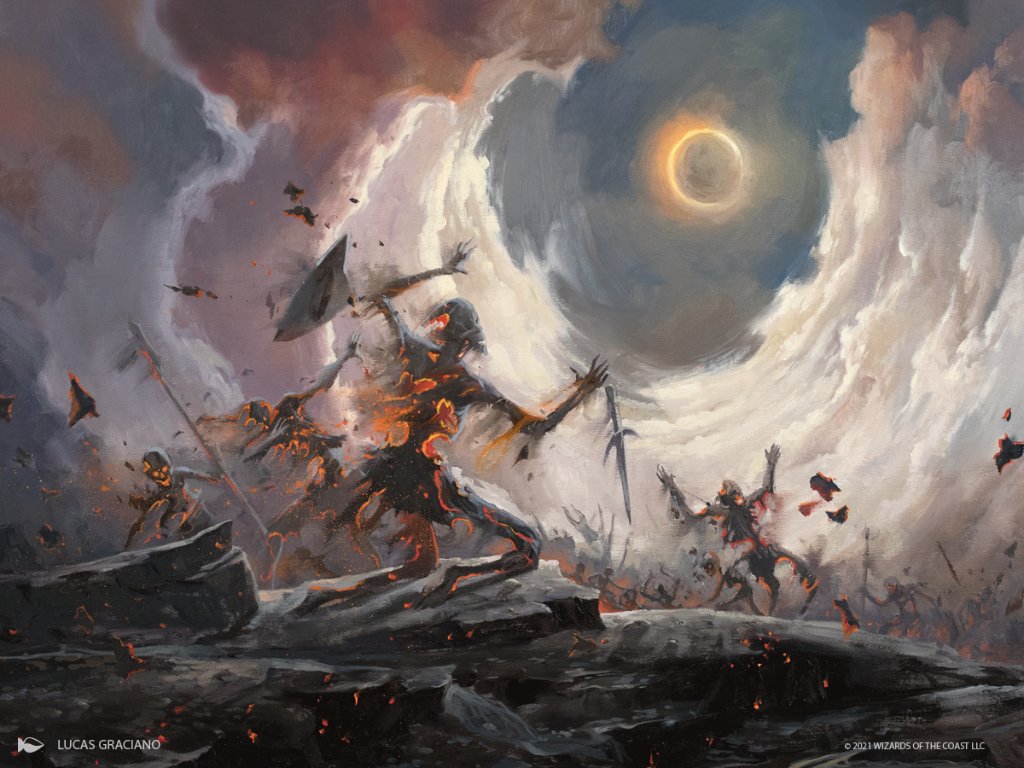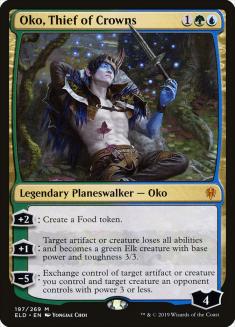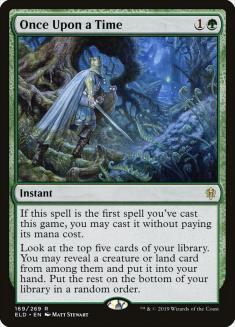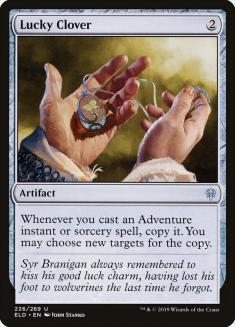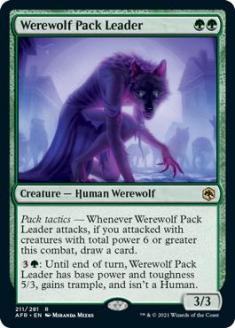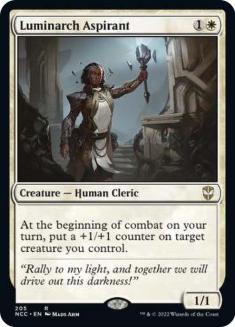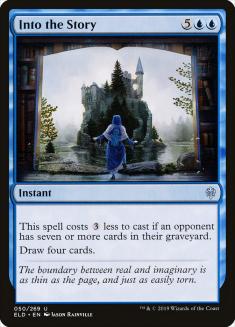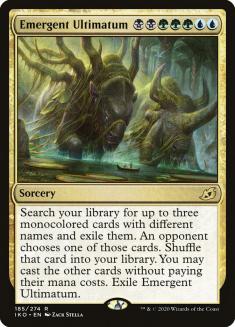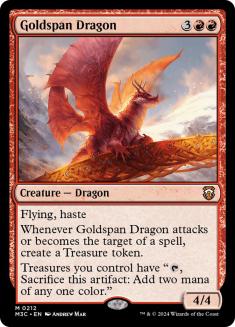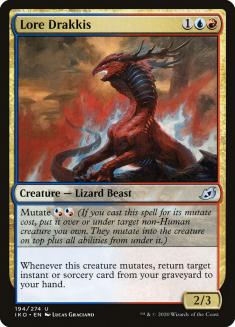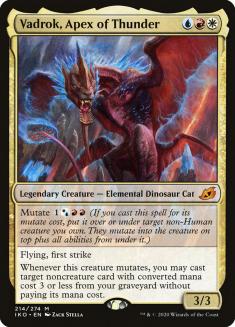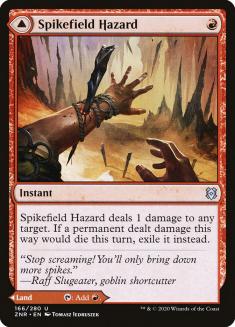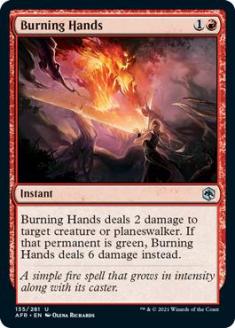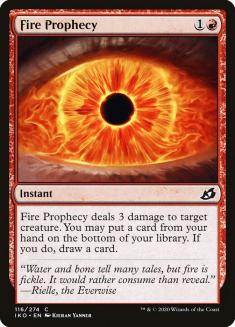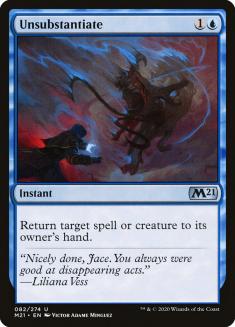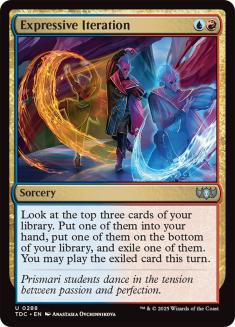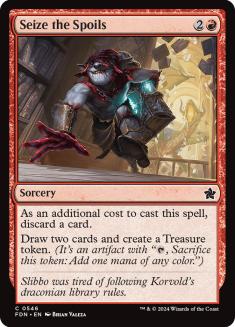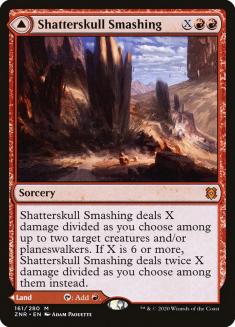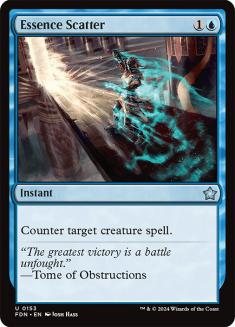I am waving the white flag in Adventures in the Forgotten Realms Standard.
Control has officially been defeated, a few months prior to a much-needed rotation. There may be a few souls, braver than I am, who will attempt to make it work in these final stages, but I have had enough. Card strength has been lacking in my favorite archetype for the better part of a decade and that is not a secret. Even with the lowered control strength, fans of blue disruption have historically weathered the storm, even displaying glimpses of tournament dominance here and there. That uphill feeling was never desirable then, but I would much prefer it to the dismay that takes over when playing competitive Standard today.
Even with a pile of bannings, control has been unable to get a foothold in Standard. Many of the top decks of the format have been affected by a ban and still put up stellar numbers. It’s hard to quantify the effect that they had on Simic-based decks, as they continue to take down tournament after tournament.
The recent SCG Tour Online tournament series did not showcase many Simic-based strategies; however, they have been dominant in the format up until this point. Whether it’s some Sultai Ramp variant or Temur Adventures, these decks continued to perform even after losing many of the broken elements that historically propelled them to the top. If you want to ever take a spooky trip down memory lane, check out all the archetype pieces that were removed, and their performance without those pieces. Standard is broken and control has turned out to be the biggest loser as a result.
The recent SCG Tour Online Championship Qualifiers (and all their feeder events) along with this past weekend’s Arena Open have painted a perfect picture of what a format becomes when control is obsolete. There are a couple of midrange options that remain competitive, but most of the power comes from the streamlined aggro decks that take advantage of a format in disarray. Without the balance of power intact, these aggro decks run the show and the difference between them is boringly negligible.
Whether you choose Mono-Green Aggro, Mono-White Aggro, Gruul Adventures, or Naya Winota, your chances of success in the format remain relatively even. Each deck casts a bunch of threats in the early-game, an aggro payoff card after Turn 3 or Turn 4, rinse and repeat. This is what had to be done to punish the clunky ramp decks that have ruled the format for too long and provide a bad matchup to all Dimir Rogues fans out there. Choosing which aggro poison you take is not a format that I, or many of my colleagues, want to live in.
Control can be crafted to beat a sea of aggro decks but loses in horrific fashion to the Dimir Rogues and Sultai Ramp decks that own the mid-game. This makes choosing control for a large-scale tournament irresponsible, although you all know that didn’t stop me. I continued to alter, test, and amend various control decks to give them a chance against the described range of decks in the format. My goal was to write a success story article for you all, against all card development odds, but sadly that isn’t what this is. This article is a cautionary tale for anyone who wants to play control in the next few months and win a tournament.
Waving the white flag is something I thought I would never do for control in Standard. It has been rough periodically over the years; however, there was always some glimmer of hope even in the darkest times. We have made control work with worse card draw, disruption, and win conditions. I don’t put the blame solely on our card strength here, but instead on what we see across the battlefield. As sets become powered down, I see light upon the horizon for my Cancel fans out there, just nothing until rotation. The results of the SCG Tour Online Championship Qualifiers did primarily showcase the boring dominance of aggro decks, a strategy I cannot get behind, but there may have been a diamond in the rough.
Not every deck in that Top 8 had a bunch of one- and two-drops. I was looking for the oasis in the vast desert of aggression and I think I found it. With a few wild cards to burn, I sacrificed some to the mutate gods to see what this deck was all about. For reference, here was Will Pulliam’s list from his Top 8:
Creatures (12)
Lands (22)
Spells (26)
- 2 Negate
- 1 Essence Scatter
- 4 Unsubstantiate
- 1 Mystical Dispute
- 2 Fire Prophecy
- 1 Sejiri Shelter
- 4 Spikefield Hazard
- 3 Seize the Spoils
- 3 Prismari Command
- 4 Expressive Iteration
- 1 Burning Hands
Sideboard

He narrowly missed a victory with this list, one that we saw pop up a few times in the SCG Tour Online Satellites that came before. The lists did not vary much from Pulliam’s, as there did not seem to be much innovation that could take place without harming the functionality of the main synergies housed there. This deck was as close to a control deck that I have seen in a high finish, with piles of card draw, disruption, and minimal threats inside. It immediately caught my eye and I had to see what it was all about.
The first synergy that I fell in love with was Goldspan Dragon and the mutate mechanic. Producing a ton of extra mana while also producing the advantages from your creatures with mutate has been a huge advantage of the deck. This may sound like blasphemy coming from me, but I have never been opposed to leaning on some creatures for victory. While others disposed of Aetherling in favor of decking their opponent, I never let go of that crutch. I’ll never turn my back on ways to knock an opponent out quickly. In addition, Goldspan Dragon hits like a truck and has immediate usage after its first attack, effectively making it only cost three mana. A cheap win condition like this can allow the user to turn on some of its disruption in one of the easiest two spell turns ever.
Other creatures in the deck synergize well with the instants and sorceries that Pulliam and others have put to work here. Lore Drakkis returns a spell to the owner’s hand, allowing the option of blue disruption on the opponent’s turn. It’s not as busted as what Vadrok, Apex of Thunder can do; however, the spells it targets require immediate use. This creates a pool of reusable card draw and removal, some of which have been identified as the strongest spells out of Strixhaven for good reason. We have all seen the impact that Expressive Iteration and Prismari Command have had on older formats. The color combination is not Simic-rooted, nor does it provide a strong color shell for the hyper-aggressive decks of the format. For these reasons, Izzet-based decks have fallen off in recent weeks, outside of this sweet deck that I have thoroughly enjoyed playing thus far.
The removal package of this deck takes some getting used to, as it isn’t as comprehensive as its black and white competitors. Burning Hands, Fire Prophecy, Prismari Command, and Spikefield Hazard have their limitations; however, they fill the bill in Standard. The format is full of low-toughness threats that start populating on Turn 1, making red removal as effective as its competitors. There have been way too many instances of Spikefield Hazard removing enemy creatures for my comfort, but here we are. Creatures rule the format, and they are squishy, easily removed by the resources available from the Izzet League.
Blue disruption in the maindeck is what initially drew me in, seeing Negate, Mystical Dispute, Essence Scatter, Prismari Command, and Unsubstantiate all play an active role in deflecting threats away from Jeskai Mutate. I was blown away by the amount of countermagic included in the maindeck and quickly realized how well it all works together. Because so many cards are draw spells, the one-for-one game in this deck is top-notch, easily refueling when the hand gets a little close to empty.
That is the key when you build a gameplan around countering and burning everything, having a broken way to continue to apply pressure while refilling the hand. The evasive creatures in Jeskai Mutate apply pressure while returning / casting spells in the graveyard to keep the monsters at bay. I love the creatures and disruption here, but it’s the card draw that puts this deck in the top-tier conversation.
As discussed, there’s little debate on the efficacy of Expressive Iteration. This card draw spell is a slam-dunk, producing card advantage at the low cost of two mana. Players who have had the pleasure in playing four copies of this card know exactly what I’m talking about. For only a two-mana investment, it delivers land drops early and quality cards late. The game changes completely when Mutate casts it again from Vadrok, then again from a Lore Drakkis put on it, while fetching a Negate from the graveyard at the same time. There are very few cons that I can list for Expressive Iteration here, outside of it being a sorcery, but it doesn’t matter. This card has a great design and will see play for a very long time.
I thought that would be the end of the card draw in this deck. Expressive Iteration covers virtually all our needs, but then we received a wonderful supplemental card draw spell from the new set. Seize the Spoils is not a head-turner on its own; however, it does do some wild things when resolved without paying its mana cost. Since it produces a Treasure, that mana (two mana with Goldspan Dragon) gives us additional opportunities for two-spell turns. Although it has played a positive role in Jeskai Mutate, it gets tough competition from Expressive Iteration, which will always be a four-of. I have already made a few modifications to the deck after giving it a test run, where cards like this, and a few others that have underwhelmed, come out to max out the strongest parts of the deck.
With Pulliam’s list as my foundation, I made a few changes to maximize it against its tougher matchups. This deck has been extremely strong against slower decks and feels favored against aggro decks with low-toughness creatures. I felt the need to get some more removal reinforcements into the maindeck, to strengthen its chances against creatures that can get a little out of the range of the very conditional, red removal that we are solely dependent on.
The first swap I made was replacing the Sejiri Shelter with a Shatterskull Smashing. The Sejiri Shelter moved to a one-of in both Jeskai Mutate lists in this Top 8, where it was formerly a two-of in lists from prior tournaments. I agree with cutting it down; however, I should have removed it entirely.
This is one of those cards that looks great on paper, protecting your creature with Mutate for further advancement, but it never comes up. Having one protection spell in the entire deck, even with all the card draw, is not effective. Shatterskull Smashing is a great topdeck, where Sejiri Shelter often is not, and it takes out a couple of threats that are tough to kill. Even when drawn early, having the option to play it untapped has been huge. Dropping from thirteen to twelve white sources has also been fine, since the only white spell is Vadrok, which is a Turn 3 play, or provides a hybrid out on Turn 4. This small change has already paid dividends and was an easy call.
The only other shift I made was continuing the trend that Pulliam started, dropping down another Seize the Spoils. It is a great card draw spell in this deck but can still be a little awkward when things are not going well. When the deck is clicking, mutations are happening, and opponents feel the pressure, which card draw spell I cast hardly matters. Seize the Spoils is not something I want to see when the pressure is on, which is why I’m down to two copies, replacing it with a second Essence Scatter.
Essence Scatter is a necessary spell for this Izzet-based deck, providing a way to fully prevent an unanswerable creature from hitting the battlefield. Creatures with devastating abilities that trigger upon entering the battlefield, or that have more than three toughness, can ruin our victory chances. An opposing Goldspan Dragon, or even worse a Winota, Joiner of Forces, is very problematic for Jeskai Mutate to handle. The memorable loss for this deck is immediately after a Winota resolves, even if most of the threats produced earlier met unhappy fates. Having extra ways to prevent it, and any creature after Turn 2, has been very helpful lately. The rest of the deck operates well, and I love the manabase Pulliam put together, especially when comparing it to others’ earlier. This is not a control deck in the traditional sense, but I am sick of lopsided losses.
To all my readers, I apologize for temporarily abandoning ship, but I promise a triumphant return when the upcoming rotation arrives.

